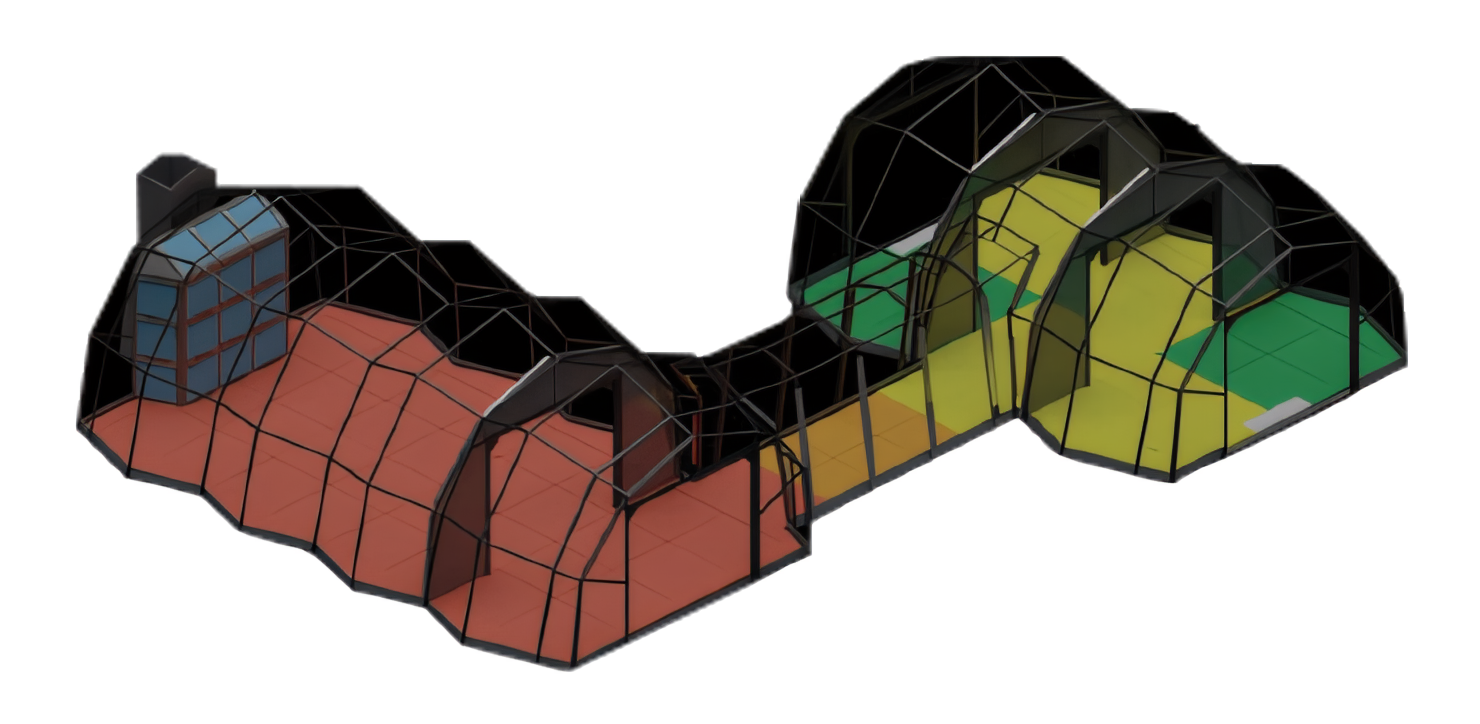
HURLBURT FIELD LO & PAINT COMPLEX VALIDATION
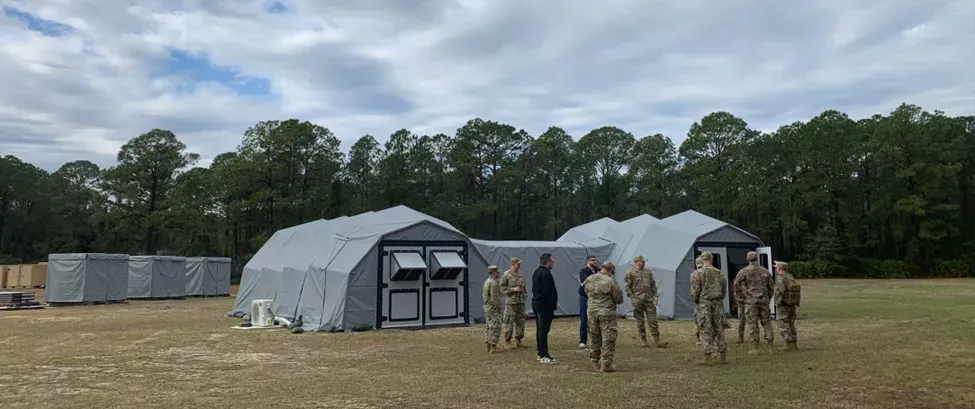
Members from the 27th & 1st SOMXG, Medical Group, AFCEC, AFMC Rapid Sustainment Office, AFSOC & PACAF A4, and Air Force Corrosion Prevention and Control Office prepare for an operational test of the ADAMS LO & Paint Complex in a simulated austere location at Hurlburt Field, Florida
Pictured above is a team of subject matter experts ready to help path find a new technology for the USAF aimed at providing fabrication & coating restoration capability in an Agile Combat Employment (ACE) type of environment. Feedback generated at this event will help validate current technology and drive innovative refinements to deliver a much-anticipated alternative to existing permanent infrastructure DoD wide. This solution provides a stop gap for existing operations and enhances repair networks by decreasing the distance parts are required to travel in the Pacific Theater for repair. This area of responsibility is home to 60 percent of the world’s population in 36 nations spread across 53 percent of the Earth’s surface. This tyranny of distance can be decreased for aircraft part movement with TRAC9’s solution positioned closer to the point of need. This relevant capability will be an essential part of Aircraft Battle Damage Repair (ABDR) operations as aerospace advanced composites and coating systems require climate control and regulated workspaces to capture dust & vapor hazards. The technology is mated with a transition room to ensure male or female workers can properly decontaminate themselves as part of standard occupational safety practices. To date the warfighter has never been able to bring a prepackaged capability like this to a deployed setting. Lack of this capability increases risk to worker health, the environment and mission as non-standard practices become a potential wartime necessity.
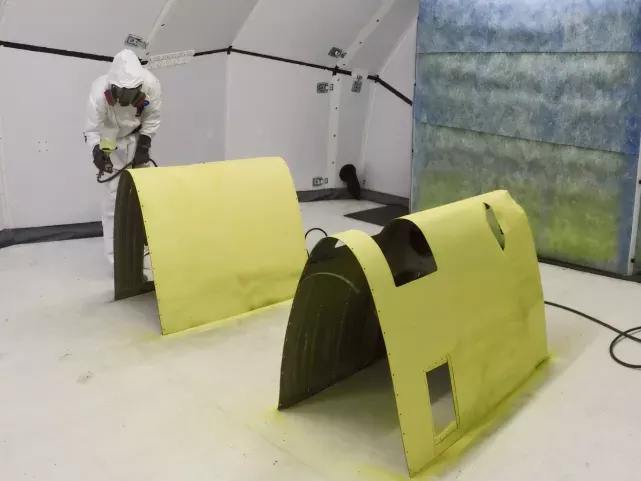
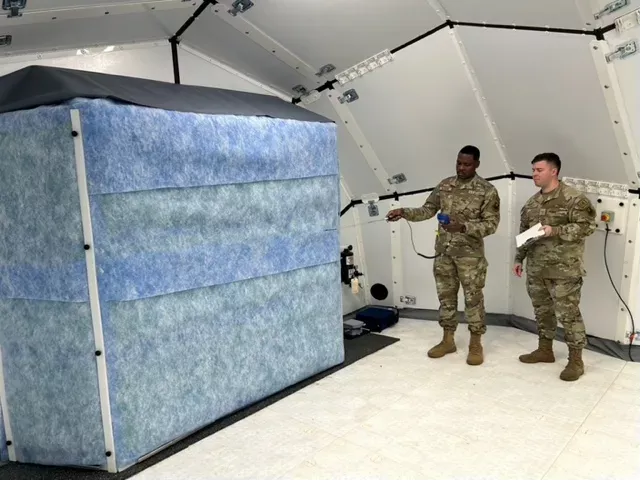
To meet the operational requirement of a light and lean solution that does not require heavy cranes and forklifts for assembly. The design team arrived at a perceived minimum footprint for the deployable kit. The idea was to develop a solution that a small team of maintenance personnel could assemble with minimum tooling and support. The team also wanted to take advantage of systems that may already be in an area of responsibility or prepositioned location. As an example, a portable air compressor or a standard MEP generator system. Although the system can be complexed to other structures to meet any operational requirement for space or back-shop maintenance, this design focused on providing the minimum qualifications necessary to meet small part repair demands. The entire system can be packed in 3 ISU-90s or palletized.
The lessons learned throughout this venture increase the lethality of weapon systems by keeping them fully mission capable without engineering limitations or delayed discrepancies. The solution stands to provide a post natural disaster surge capacity or a post attack recovery solution in the event critical infrastructure is lost or takes years to replace. Given the fact people are certainly more important than hardware the system provides a safer solution for what has traditionally been an accepted wartime necessity of performing sanding and painting operations in non-approved fabric shelter systems. TRAC9 looks forward to developing solutions and use cases like this one that require outside the box thinking and a dedicated team of innovators to solve real-world logistics challenges.
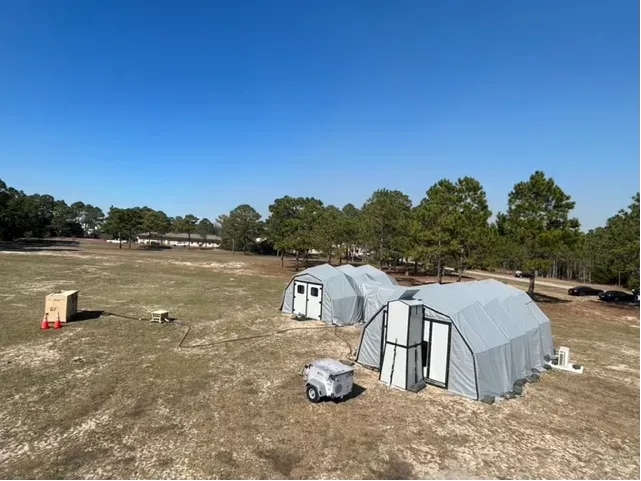
Simulated austere location
